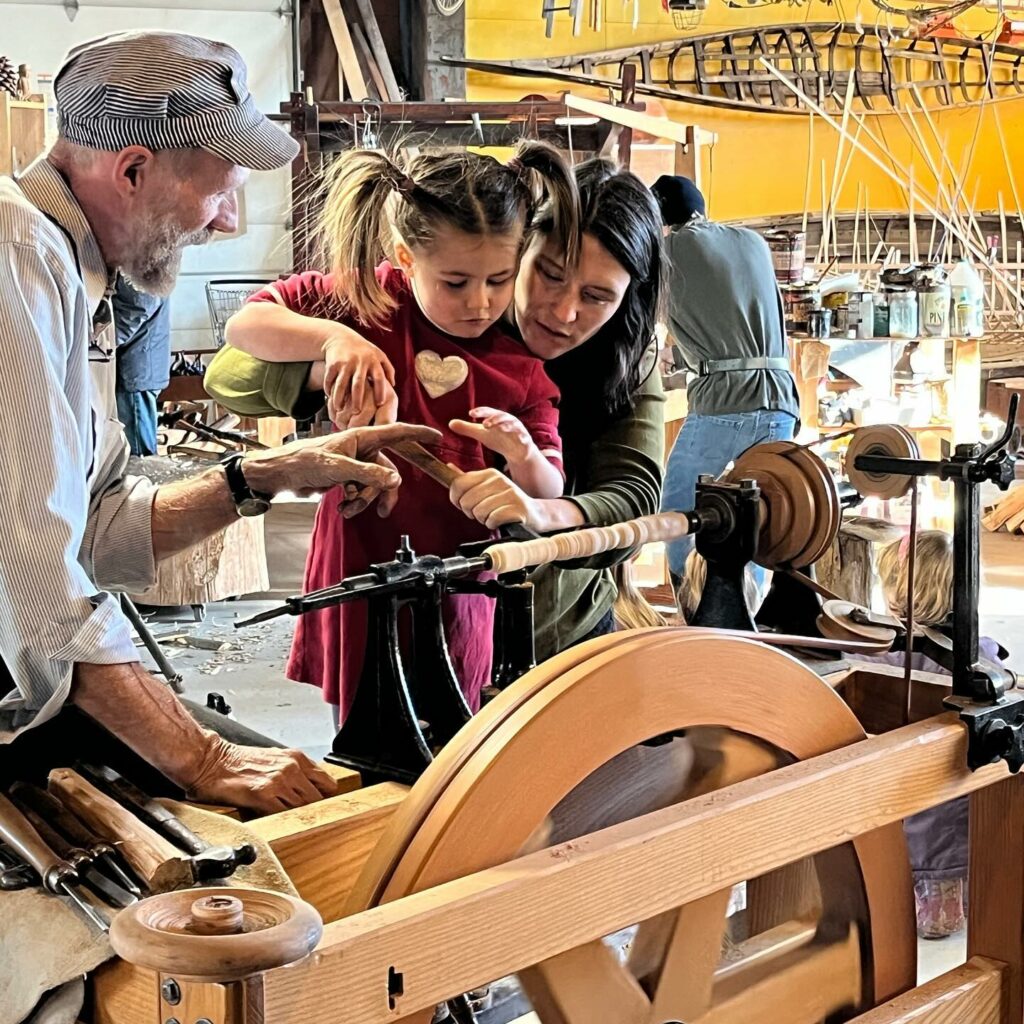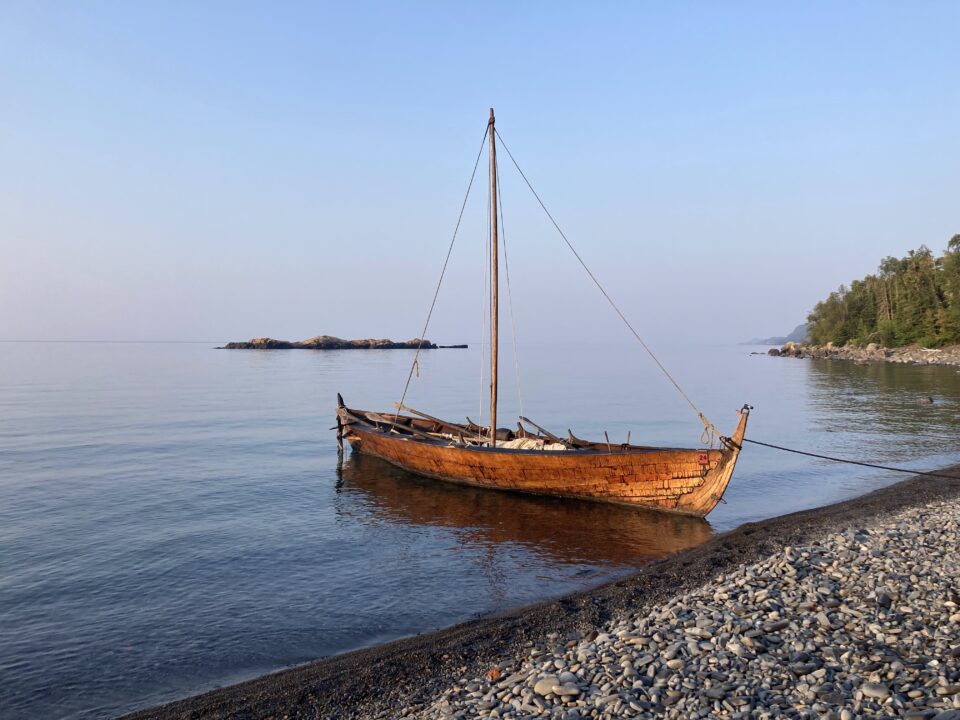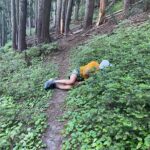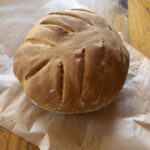“Low tech sounds good, looks good, and smells good,” explains John Finkle, master wooden boat builder, as he admires a hand-built 19th century herring skiff at his workshop in Knife River. John would know – he has dedicated his life’s work to the art of building wooden boats in the most low-tech, heritage ways possible. He and his apprentice, Justin Anderson, are seven years into their nonprofit boat-building community project named Nóatún (Old Norse for “boat home” or “boat enclosure”). Together with community volunteers, Finkle and Anderson build traditional wooden boats that are then rowed, sailed, and paddled on Lake Superior and beyond. Inspired by Scandinavian boat-building heritage, the brainy builders teach community members to do creative work using hand tools. The hand-powered labor being done at Nóatún Boat Works truly does sound and smell amazing. And the resulting boats, such as the formidable 27-foot, Viking-age “Ælfinna” trerøring (Norwegian for boat with three pairs of oars), are an incredible sight to behold on big water.
“It all starts in the tamarack bog,” explains Finkle, recounting the initial steps of wooden boat building. The spry woodsman doesn’t hit up the hardware store or the lumber yard – he goes direct to the source. “It’s my favorite part of the whole process,” says Finkle. “We use all the natural gifts of the tree, such as the tamarack knees (the underground roots that often have a natural bent shape to them). Nordic boats are good at using the strengths of the wood,” Finkle elaborates.
Of course, it’s tough to penetrate a tamarack bog, so Finkle waits until the snow and ice cover are just right. He and his crew pull special logging sleds on the crusted ice deep into the bog. Then Finkle climbs the tamarack, attaches ropes, and he and his team haul it over with block and tackle. Then the many-year process of assembling wooden boats – without power tools – can begin.
Finkle and Anderson have recently moved Nóatún Boat Works from its former location along the Duluth harbor to a promising new space in Knife River, within steps of Lake Superior. It hasn’t been easy to move 20 wooden boats, hand-made looms for weaving verafeldur (historical Icelandic wool travel blankets), and their biggest project of all – a 47-foot, ocean-going longship in the Nordic lapstrake tradition (pointed at both ends, with no transom). Incredibly, Nóatún’s friends and volunteers hauled the heavy wooden ship by bicycle 20 miles up the shore to Knife River, following the same route as car traffic along Superior St., London Rd., and Scenic Highway 61. The stunning feat, complete with smelt fry festivities at the halfway mark for the haulers, epitomizes Nóatún’s low-tech, community-based approach.
One thing that hasn’t changed in the new location is their community build nights. Finkle’s focus has always centered on involving youth and families in the build process, creating a neighborhood space for “hanging out” and learning.
The Sipilas are one family that frequents the community builds. “Things happen here that we don’t often see in the digital age,” explains Katri Sipila, who brings her pre-teen twins Leo and Sage to help at the new shop space. “Here you can experience things hands on, and it’s always a team effort,” Sipila adds. “We are all one, working together,” Sipila concludes, as Sage wields the sickle to cut down tansy and plays with the friendly goats that roam Nóatún’s new outdoor workspace.

The Sipilas have also been out rowing on Ælfinna – the ship they helped build the most. “I brought my whole family then,” says Katri Sipila, who has five children.
Justin Anderson says Nóatún is a lot of work. But he has also brought the non-profit to the point where he and Finkle can get paid through grants for their boat work and community organizing. Anderson is the duo’s virtuoso grant writer, and studied fine arts at UMD. “Grant funding for the arts is easier than science grant funding,” explains Anderson, who calls the wooden boats “sculpture.” Nóatún has received grants from the Arrowhead Regional Arts Council, the Minnesota State Arts Board, the American Scandinavian Foundation, the Lloyd K. Johnson Foundation, and the Four Cedars Environmental Fund of the Duluth Superior Area Community Foundation. “We can be proud as Minnesotans, because we have some of the best arts funding in the nation,” notes Anderson.
Nóatún’s projects have directly engaged over 700 community members in hands-on learning experiences over the past seven years. This unique model of collaborative education also produces tangible results that all of the community builders can take pride in. “Boat building has been separated from real life by industry, which makes plastic kayaks, and fiberglass motorboats. There is not a lot of wooden boat building happening around here. We happen to be interested in it,” says Anderson.
Finkle and Anderson embrace a diverse demographic at their workshop, and are taking on increasingly ambitious projects thanks to the passionate feedback they get from participants who find the experiences so valuable. “We get to make this cool model where people can come here and share working in a community space, but also get serious stuff done,” Anderson points out.
If wooden boat building sounds interesting to you, too, head over to www.duluthfaering.org to reach out to John and Justin and get more information on upcoming community builds and wooden boat events around Lake Superior.




